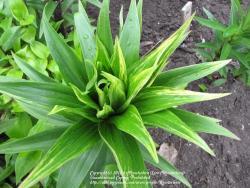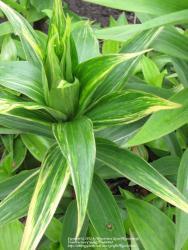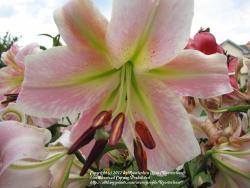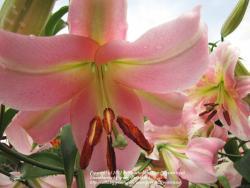Lorn, the background Maywood lilies in your third pic are an excellent example of virus. Having a normal one (at least seemingly normal) in the foreground for contrast is a fantastic idea on your part, and a very valuable addition to the data base.
Your second pic, though, even if it is virused, I would discourage publication. The pattern is very regular...not unheard of with a virus, but pretty uncommon. I just can't tell with surety, if it is virused or not. Assuming it would be the same virus as in the third pic, I would expect the symptoms to be similar on the same cultivar lily, pointing to a non-viral cause or a different virus. Without a lengthy, thorough explanation accompanying the photo, I think it would confuse lily growers.
Subsequent examples by Pard, Moby and Dutchlady are spot on. I would also hesitate in calling any of these a 'color breaking virus" even if the term is used generically. Depending on temperature, severity of infections, cultivar and other factors, the same virus may or may not color break or show symptoms at all. There are so many, many different viruses that can affect lilies that we lump into the same term: virus, because it is nearly impossible to separate them without microscopic (or more definite) analysis. Since most can't be differentiated (and I would venture that most haven't even been identified) lets just stick to the very general term "virus", and without presumptuous classification.
Whether the Tulip Break virus outwardly affects flowers only, I don't know. Obviously, the virus is throughout the plant.







